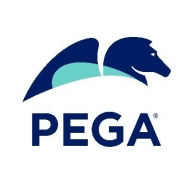

Pega Platform and Make are competing products in business process management and automation. Pega Platform presents advantages in pricing and support, while Make distinguishes itself with extensive features and seamless app integration.
Features: Pega Platform is strong in dynamic case management and automating complex processes. Make offers powerful integration capabilities and connects diverse apps seamlessly. Pega focuses on sophisticated process automation, whereas Make provides versatility in app integrations.
Ease of Deployment and Customer Service: Pega Platform offers a comprehensive deployment model with strong customer support, ensuring a smooth implementation. Make provides a straightforward deployment model with flexible onboarding. Pega's support resources are robust, while Make appeals to businesses needing a quick setup.
Pricing and ROI: Pega Platform usually requires a higher initial investment, with a focus on delivering substantial ROI through comprehensive offerings. Make provides a cost-effective setup with a focus on quick returns, utilizing its integration strengths. Pega’s pricing reflects enterprise-grade solutions, whereas Make delivers value for integrated ecosystems at a lower cost.


Make lets you visually build workflows to solve complex problems - the way you imagine them in your mind.
Pega Platform facilitates business process management, case management, and workflow automation for industries like banking, insurance, and healthcare. It supports digital transformation and customer service enhancements with its low-code capabilities and seamless integrations.
Pega Platform enables users to create efficient systems for case management, financial operations, and digital transformations. It provides tools for client onboarding, quoting, claims processing, customer experience improvements, and content management. Pega's low-code approach allows for the automation of complex processes, making it suitable for enterprises looking for adaptability and rapid deployment. While it offers strong real-time analytics and decision automation, users acknowledge challenges in user interface, integration, and performance aspects. High costs and a learning curve need attention, and enhancements in AI features and cloud services are desired.
What are the key features of Pega Platform?In banking, Pega Platform automates loan processing, accelerates customer onboarding, and manages compliance. Insurance companies benefit from streamlined claims processing and policy management. Healthcare sectors use the platform for patient engagement and care coordination, enabling organizations to adapt quickly to changing industry requirements.
We monitor all Process Automation reviews to prevent fraudulent reviews and keep review quality high. We do not post reviews by company employees or direct competitors. We validate each review for authenticity via cross-reference with LinkedIn, and personal follow-up with the reviewer when necessary.